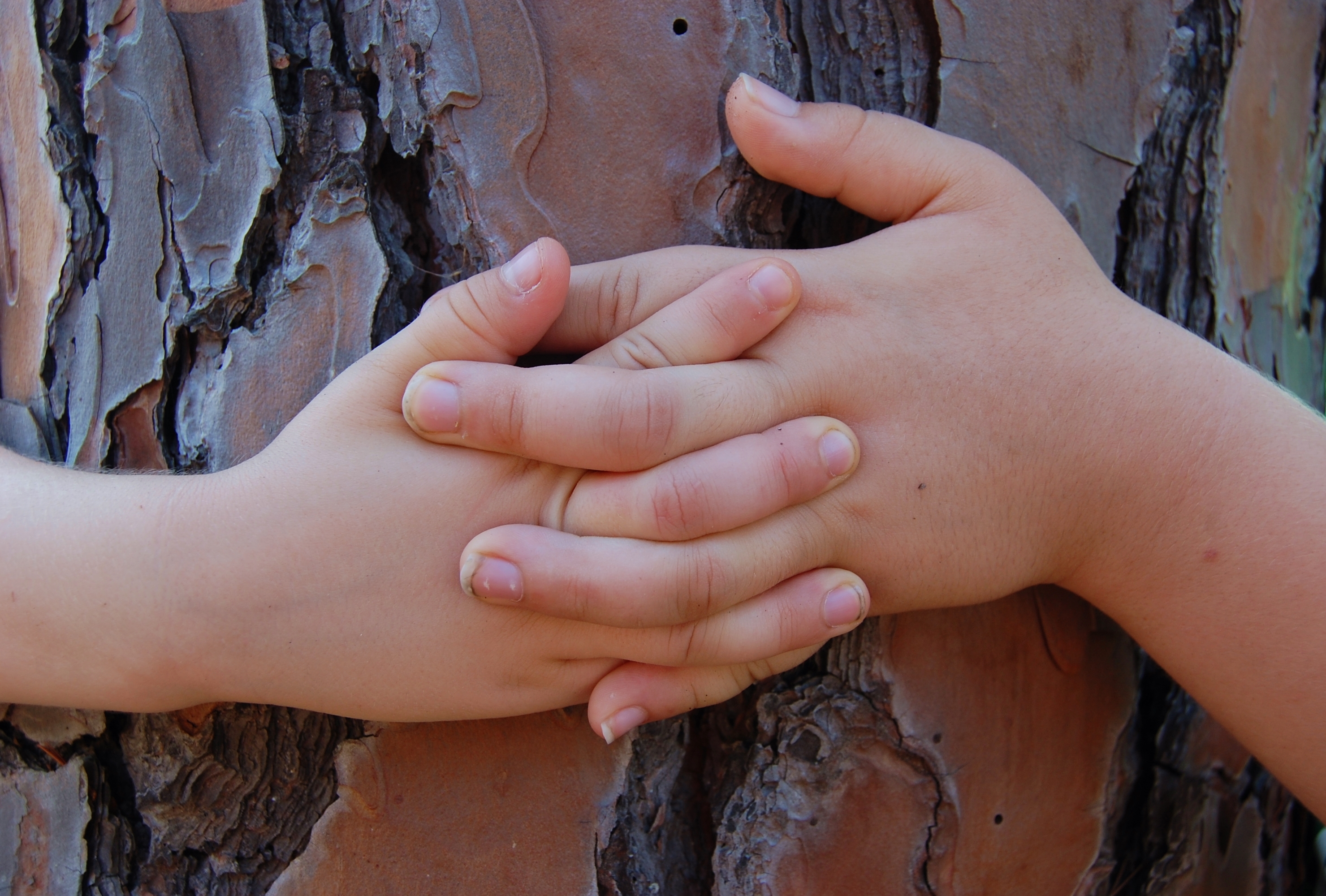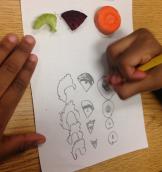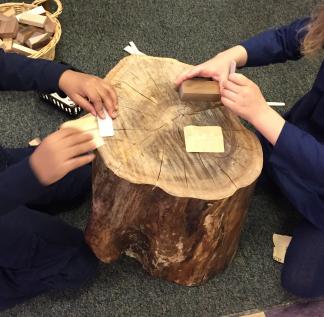Bright Ideas
We Are Nature
April 4, 2022

This guest blog post was written by Melissa A. Butler as a representative of Fairplay’s Screen Free Week initiative and member of the Fairplay Nature Play working group. All opinions expressed are that of the author.
Learn more about Fairplay’s Screen Free Week, taking place this year from May 2-8, for ideas, events, and stories that encourage children and families to get off screens and get outdoors… to play and breathe and be.
Everywhere I turn I meet someone who longs to reconnect with land, the growing of food, local community, and ways to nurture children’s learning through deeper connections with nature. Learning in and with nature isn’t new. It has always existed. Yet there’s a renewed interest and ever-expanding ways to describe the what and how of it: garden-aligned, indoor-outdoor approach, nature play program, forest school, place-based, unschooling, agricultural integration, environmental education, earth studies, sustainability-focused, holistic curriculum – the list goes on.
Underneath this what and how, there is a WHY that stretches beyond the extensive evidence of value. Yes, the benefits of nature are substantial along numerous data points of health, wellbeing, learning, relationships, and community. And… to be in nature, play with nature, learn from nature is more than the sum of its parts or the accumulation of outcomes that follow from an initial point of investment. We long to bring more nature into our lives, and the lives of our children, because we’re searching for wholeness. When we connect with nature, we connect with the deepest parts of ourselves. Being in nature reminds us that we are nature.
Remembering ourselves
There is no separation between humans and trees, rocks, rivers, soils, worms, bees, you, me. As humans who often dwell in the space of our minds, we create separations. Most mainstream definitions of “nature” still rest within a human-nature duality:
“the material world, especially as surrounding humankind and existing independently of human activities” and “the natural world as it exists without human beings or civilization” (from dictionary.com)
This duality shows up in movies, TV, children’s books, everyday talk, and even in some nature-based curriculum and programming. Yet anyone who has sat for a time with a tree or taken a sunrise walk with a mountain knows this duality isn’t real. We are part of nature. We give and receive as nature. Everything we think, feel, create, share, and become is nature. At some point in our lives we may have forgotten this, but as nature, we will always come home to remembering.
Supporting children's exploration
It’s important for us to notice where assumptions of “We are nature” or “We are separate from nature” show up in our content, programming, language, and interactions with children, and where they show up in children’s understandings. Once we notice for this, we can make all sorts of small shifts in our approach through questions, prompts, and invitations.
1) Explore patterns

Exploring lines is another way to deepen wonder and connection. Look closely at a slice of carrot, your hand, a piece of wood, a stone, segment of cloth, small rip of masking tape. What do you notice? What kinds of lines do you find? Draw them. Discuss them. Why are there lines? Are there other words to describe them? What purposes might the lines serve?
2) Encourage nuance
Children like to sort and categorize things. This is an important part of their development. However, adults must be keenly aware of the tightness to which children hold categories and the meanings they (explicitly and implicitly) learn to attach to them. One way to observe children’s play is to notice how they frame their understandings. Often, thinking shows up like a binary T-chart with clear separations: This is a plant. That is an animal. This is alive. That is dead. This is real. That is fake.
We can authentically nudge more complexity by offering a Venn Diagram for sorting objects or Venn Diagram-language to discuss what can’t be touched: What’s different and what’s the same? Look at the item that’s “alive” and the item that’s “dead” and wonder in the overlapping space. How are they alike? How else might we see and describe them? What else can we notice?
To further develop nuance, we can offer a continuum (ßà) to nudge the binary of “real” and “fake,” for example, to grow into a discussion of “most real to least real” or “most organic to most synthetic” or “easiest to compost to most difficult to compost.” Always with the question, Why? How might we test it? What other things might we add to our exploration to deepen our understanding?
3) Wonder about knowing

In The View from the Oak, Judith and Herbert Kohl share various ways that creatures experience space, “that is, how they experience where they are and where other things are located.” Our human orientations of up-down-far-near are quite different from how a rattlesnake knows changes in temperature, a spider knows vibration, and a rabbit knows the map of its tunnels.
When we encourage children to wonder about the knowing of other beings—How does a worm know? What does the moss know? What might we learn from a stone?—we invite them to explore all the ways that they know, too, and find infinite connections in the rich landscape of knowing. Often this starts with us noticing how we frame questions about other beings and how we respond to the questions children ask. Where are we placing our own orientations upon another being and where are we listening from a place of unknowing and deep wonder?
We teach who we are
As we think about the what-how-why of nature learning, we also need to reflect on who we are and how we show up with the children in our lives. We need to notice our own dispositions, beliefs, feelings, language, and stories about nature. Where might we assume and promote a duality that isn’t needed (inside-outside; play-work; natural-unnatural; life-death)? Where might we tell stories of nature that are not true or aligned with nature (competition; scarcity; war; weeds; usefulness; productivity)? Where might we over-scaffold and unconsciously create meanings that are too tidy and fixed?
This year, 2022, is a moment of rich complexity, profound shifts, and expansive longing. As the old structures, paradigms, belief-patterns, and dichotomies fade away, including those held in our schools, knowledge-systems, curricula, and our own thinking, how might we cultivate ourselves as the soil for something more beautiful to be born?
About the Author
Melissa A. Butler is a writer and educator specializing in the art of noticing and holistic learning design. She’s a member of Fairplay’s Nature Play working group. Her most recent books include How to Notice (adult nonfiction) and IN A BUTTON (picture book). Sign up to receive her monthly newsletter: Noticing Matters.
Further reading:
- The Other Way to Listen by Byrd Baylor, illustrated by Peter Parnall
- EARTHDANCE by Joanne Ryder, illustrated by Norman Gorbaty
- The Stuff of Stars by Marion Dane Bauer, illustrated by Ekua Holmes
- The Whales by Cynthia Rylant
- Growing Patterns: Fibonacci Numbers in Nature by Sarah C. Campbell
- The Hidden Life of Trees by Peter Wohlleben
- The View from the Oak by Judith and Herbert Kohl
- Gathering Moss by Robin Wall Kimmerer
- The Edge of the Sea by Rachel Carson
- Handbook of Nature Study by Anna Botsford Comstock
If you’re looking for Nature Study Resources, check out: Big Green, Green Schoolyards America, Childhood by Nature, and others listed on the Resource Page of the Natural Start Alliance.

